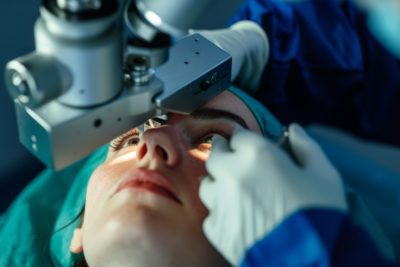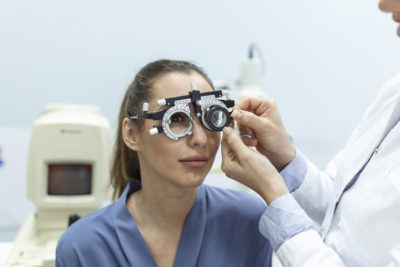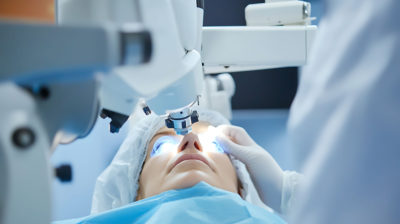Getting tired of wearing glasses and contact lenses?
Don’t we all wish if something could be done to get rid of these hassles. At the same time, the idea of getting a Lasik surgery on the eye is scary to say the least; especially so when glasses and contacts are allowing us a clear vision. There is always that nagging fear – what if something goes wrong during laser vision correction surgery and there is a loss of vision. This is what we often hear from patients and their very concerned families. And I can totally relate to that fear. I had the same feelings before I underwent Lasik myself.
I think it is extremely important to be realistic about LASIK just like everything else in this world. Just like we take all the precautions while driving a car to ensure that we don’t get into an accident similarly we need to understand all the safety aspects related to LASIK surgery. Whenever we get a patient who is desirous of getting rid of glasses, he or she is made to go through a battery of tests also called pre-LASIK evaluation to determine suitability for laser vision correction. At the heart of these tests is to determine safety of LASIK for a person’s eye. LASIK is not for everyone or in other words performing Lasik on everyone is not safe. There can be number of reasons why LASIK may not be a safe option such as thin corneas, abnormal corneal curvature, glaucoma, uncontrolled systemic diseases etc.
- Comprehensive vision and power analysis are done first which includes rechecking the numbers to ensure that the numbers are stable. If eye power is not stable for at least an year then it is better to postpone the surgery to a future year. Powers are also re-checked after putting the dilating drops to ensure we get the correct powers. Especially in younger eyes excessive muscle action inside the eyes can give false powers when tested only without the drops.
- Corneal topography where the surface of cornea is mapped. This test report is in the form of beautiful colorful maps. These maps inform us about the shape of cornea and if there is any hidden corneal disease. Again the aim is to ensure that we rule out any corneal disease which may make LASIK unsafe
- Corneal thickness measurements ( Pachymetry) where we ensure that the thickness of cornea is within normal range. Again there is no magic number that we look for but we look at thickness in conjunction with the eye power that needs correction and the map of the cornea. Sometimes a 520 micron may be thin and sometimes a 480 may be normal.
- Pupil size measurements especially in dim light conditions to ensure that we know how much bigger it becomes in dim light. We decide the zone of correction from this reading
- Wave front analysis is done to study aberrations due to the optical system some of which warrants consideration and correlation with other tests.
- Contrast sensitivity analysis which is done to understand the optical system and quality of one’s vision especially under conditions of low contrast such as dim light conditions
- Muscle balance tests are done to ensure and find out any hidden muscle weaknesses. If significant we may have to treat them first with exercises etc prior to planning a Lasik surgery
- Tear film tests are done to assess the state of surface of eyes. Current lifestyles due to excessive use of computer and excess exposure to air conditioned atmosphere affect our eye surface and cause dryness. We need to treat that and often modify our work habits to ensure a healthy well lubricated eye surface prior to LASIK
- Length of two eyes. This is checked by using a machine called IOL Master and is important in patients where the eye power in two eyes is different to understand the reasons for the difference in the eye power. One eye larger than the other warrants some considerations and often modifications in surgical plan.
- Retina and Optic nerve assessment to ensure that these other parts of the eye are also normal. Some patients who are detected to have holes in the peripheral parts of retina are advised retinal lasers to seal these holes prior to LASIK surgery
- A detailed history is always taken to rule out any body related disease which may cause problems in healing post surgery
I am sure you must be thinking these tests must be taking a hell lot of time. Well not exactly, the advanced machines and the trained professionals make our job very easy and all we need is 1-2 hours to determine safety and suitability.
So despite the fact that LASIK surgery has been shown to improve the vision and daily life of millions across the world, please ensure it will do the same for you by undergoing these tests. These tests are required for all Lasik surgeries whether it is conventional Lasik surgery, Femto lasik or smile Lasik. Enjoy a glass free world!









